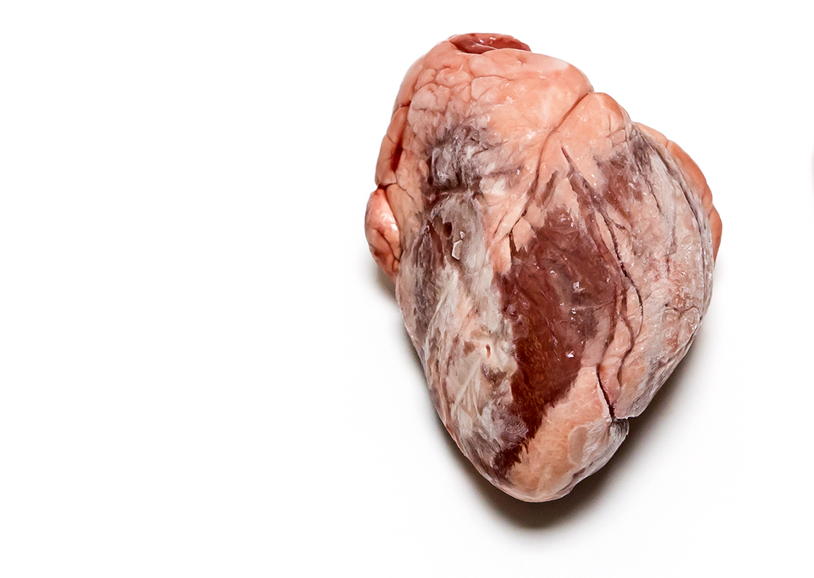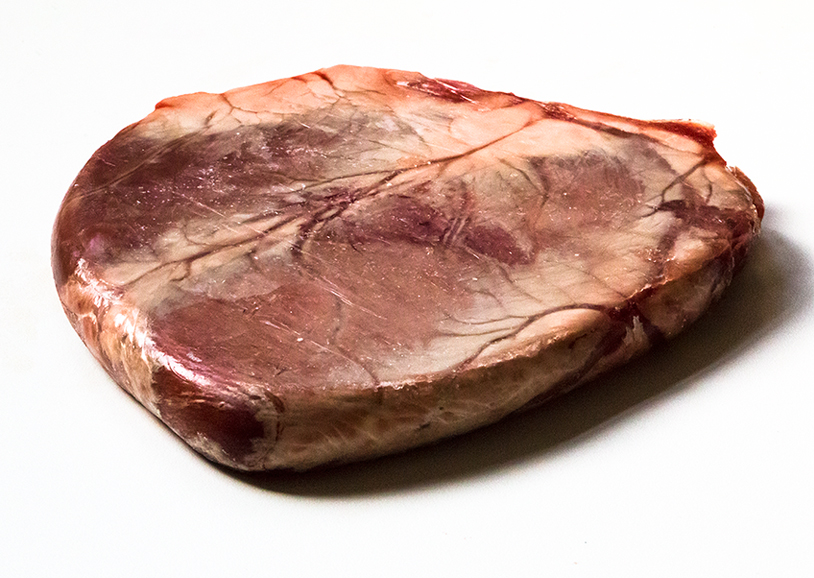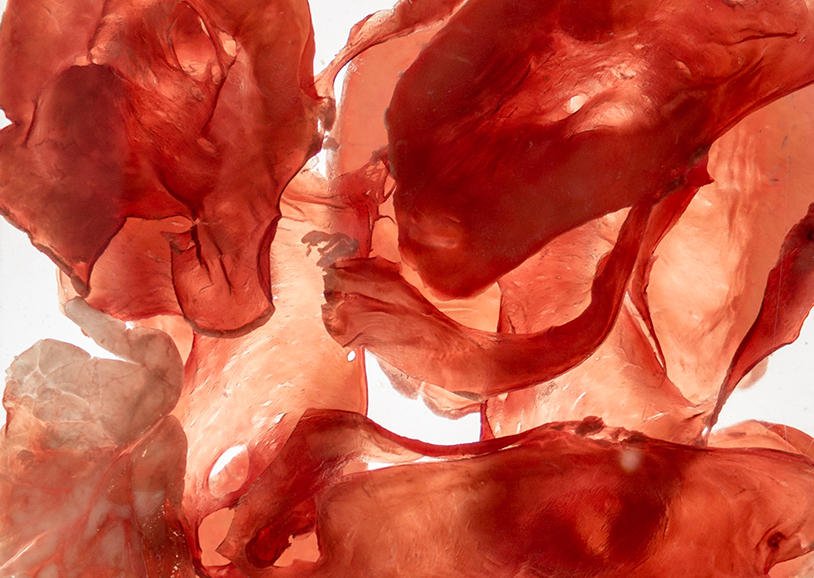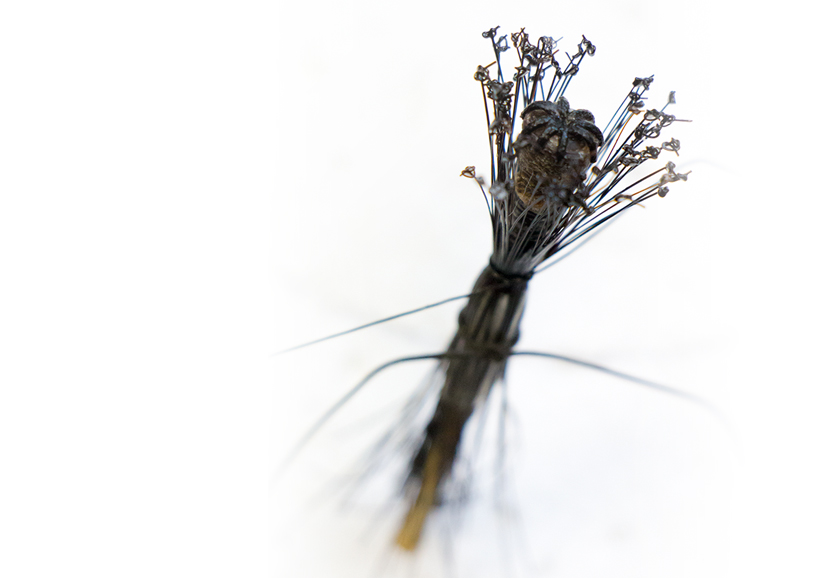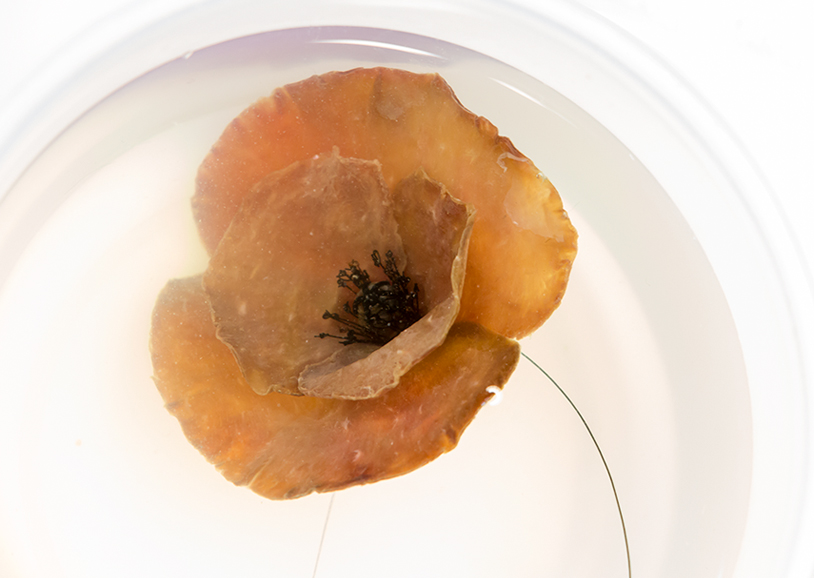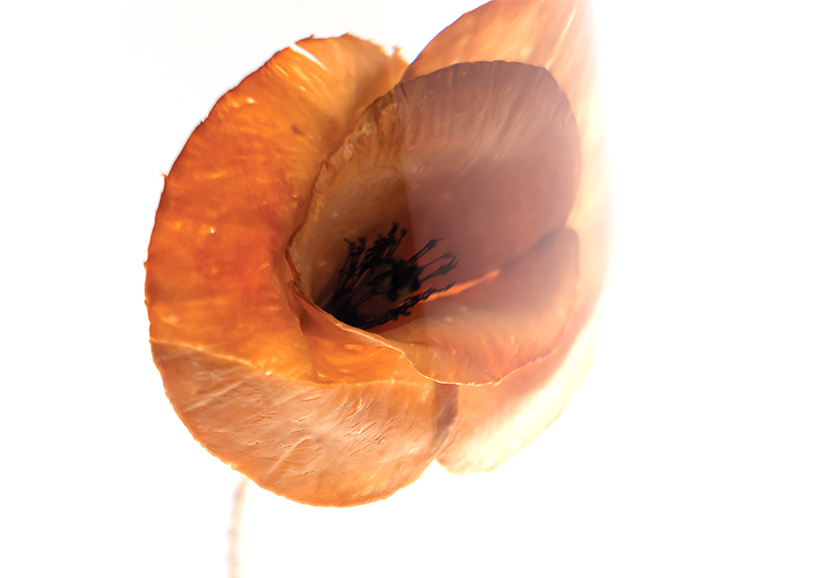Papaver Rhoeas
Artist Paddy Hartley has created a series of highly emotive and thought provoking hand made poppy sculptures using pathologically preserved lamb’s heart tissue.
Drawing on the poppy’s synonymity with the commemoration of World War 1 and other conflicts, Papaver Rhoeas are uniquely crafted artworks produced by a unique team of art and science practitioners that address contemporary notions of remembrance and the cultural phenomena of memorialisation.
Paddy Hartley’s Papaver Rhoeas sculptures are composed of lamb’s heart tissue, horsehair and vintage suture cotton and are presented as pathological specimens in custom-made blown-glass vessels inspired by the forms of spent World War 1 artillery shells. Every poppy varies in colour and composition, based on the treatment and processing of the tissue. They are created in response to the highly volatile and variable nature of both personal and cultural memory, and address how particular narratives from different voices may be authenticated or disavowed. The sculptures draw no affinity to any notion of nationality nor numbers of dead, but acknowledge all lives lost during conflict whether they are service personnel or civilian, young or old, or from any faith or ethnic background. Papaver Rhoeas emphasise our universally shared vulnerability of the flesh.
We live in a culture of increasing real world and virtual memorialisation and there are ever more frequent rituals and ceremonies devoted to the bygone past or specific individuals. Many World War 1 commemorations take place at legitimised national museums, monuments and archives where the horrific events of 1914 -1918 have been stratified through preserved documents, objects and accounts. In stark contrast to this, Hartley’s chosen medium is heart tissue. The anatomy of each sculpture has a literal connection to the actuality of the events that the poppy has been assigned to memorialise. The loss of the body, the passing of life, the blood spilled and the decomposition of flesh on the battlefield. Papaver Rhoeas represents the symbolic preservation of memory using pathologically preserved tissue harvested from the engine of life.
As flesh turns to dust, similarly a selection of Hartley’s poppies are created to transition from solid object to transparent ghost like forms and in some instances, to disappear entirely. As a result of intensive tissue processing in collaboration with his science partners, a selection of these sculptures will gradually fragment and disintegrate over their own lifespan. The physical object will literally transfigure to exist solely as a memory in the mind of the viewer. As temporary, transitory and ephemeral artworks, the Papaver Rhoeas sculptures dispute the veneration of the material trace and present a charged, vital and momentary reliquary for remembrance and memory.
With the centenary of World War 1 upon us, it is an opportune moment to examine the reasons for the cultural compulsion for memorialisation and ask if a moment of closure from trauma might be possible. Do we memorialise for those lost, or for ourselves? With continued and new conflicts wrought across the globe, why are we seemingly unable to learn from the events of the past? With the passing of living memory, the grip of those with the most fierce, impassioned and raw connection to each war is gradually loosened and the events they endured inevitably become systematically assimilated into the history of all other conflicts. Hartley offers another option. These poppies remain a mirror for memory itself, being in a state of permanent evolution and, in some cases, susceptible to disappearance. He presents the notion that a more vigorous and productive interaction with remembrance may well entail an ability to forget.
Niamh White, Curator.
Papaver Rhoeas has been 2 years in the making and has been made possible thanks to the support of The Wellcome Trust
